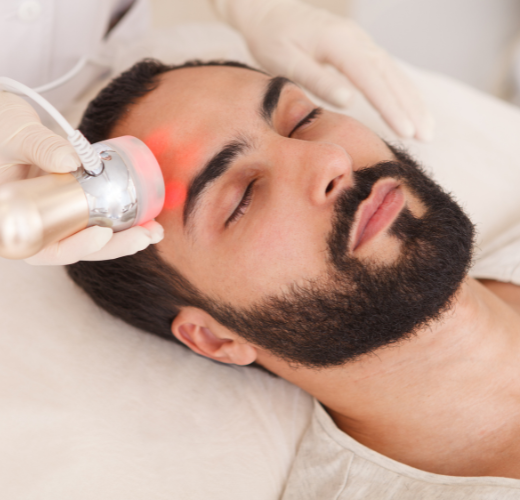A Dermatologist’s Guide to Stress and Skin Health

April is Stress Awareness Month and it’s crucial to recognize the impact stress has on our skin and overall well-being. As a lifestyle dermatologist, I’ve witnessed firsthand the intricate relationship between stress and skin during my consultations. Stress doesn’t just manifest as mental angst; it also presents in my clinic with the worsening of skin conditions such as acne flare-ups, psoriasis and eczema exacerbations, accelerated skin aging, and hair loss.
By definition, stress is a physiological and psychological response to a threat. Stress triggers various systems such as the endocrine, immune and nervous system, also known as the neuro-endocrine-immune network leading to a chain reaction that includes increased cortisol levels and immune cells that cause an inflammatory response. This response diminishes our skin’s natural barrier function making it more susceptible to environmental aggressors, moisture loss, increased infection, and delayed wound healing. Signs of stress on the skin can present with dryness and itchiness (1).
When it comes to combating stress, there are a myriad of ways we can diminish it. This includes adding more hours of sleep, eating a well-balanced diet, and incorporating exercise and meditation in your daily routine. As a dermatologist, another best way that I recommend to manage stress is getting facials.
According to the Cleveland Clinic (2023), a facial is a noninvasive skin treatment that includes cleansing, moisturizing, exfoliating, and other elements that are customized to your specific skin type and needs. They are performed by licensed skin care professionals like aestheticians, and they’re intended to 1) address your skin concerns, 2) promote overall skin health, and 3) help with relaxation.
Facials are a foundation of skincare routines and it is also considered as a powerful tool in preventing stress-induced skin concerns. However, aside from their aesthetic effects, facials can also offer therapeutic benefits such as lymphatic drainage. An article on Healthline (2019) states that lymphatic massage, a specialized type of massage that has been traditionally used to treat lymphedema, has now become a staple in people's beauty regimen as a weapon against puffy, dull, and irritated skin. This is because the lymphatic system facilitates the removal of toxins, excess fluid, and cellular waste of the body. Simply, lymphatic massage promotes a clearer and more radiant complexion while alleviating facial tension and promoting relaxation.
Managing stress is not only limited to the techniques I have listed. Here are some practical tips for stress-relief that can and will encourage skin nourishment:
- Practice self-care rituals. Dedicating time each day for your skincare routine, exercise, and activities that bring you joy is one of the best ways you can do to avoid a stressful lifestyle.
- Staying hydrated. Proper hydration supports skin elasticity and overall health. Aim to drink plenty of water throughout the day, especially during the summer.
- Practice deep breathing: Incorporate deep breathing exercises into your daily routine to reduce stress levels and promote oxygenation of the skin.
- Seek professional guidance: Consult with a dermatologist or a skin care professional to tailor a regimen that addresses your unique skin concerns.
Recognizing the impact of stress on our skin is essential to proactively manage stress. By following the techniques I have mentioned, you will be able to achieve not only healthier skin but overall well-being as well.
References:
Cleveland Clinic. (2023, August 23). Facials: What are they, and what do they really do? https://health.clevelandclinic.org/what-is-a-facial
Sharkey, L. (2019, July 23). Lymphatic Drainage facials: the latest weapon against puffy, dull skin. Healthline. https://www.healthline.com/health/lymphatic-drainage-face#beauty-benefits
Zhang, H., Wang, M., Zhang, X., Wang, Y., Chen, X., & Su, J. (2024). Role of stress in skin diseases: A neuroendocrine-immune interaction view. Brain, Behavior, and Immunity, 116, 286–302. https://doi.org/10.1016/j.bbi.2023.12.005

